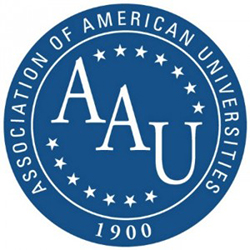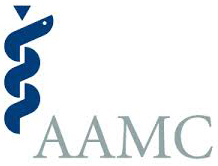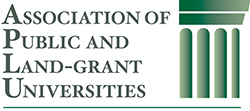 On March 4, the U.S. Patent and Trademark Office issued a guidance memorandum, entitled "Guidance For Determining Subject Matter Eligibility Of Claims Reciting Or Involving Laws of Nature, Natural Phenomena, & Natural Products" (or "Myriad-Mayo Guidance"), to implement a new procedure for determining the subject matter eligibility of claims under 35 U.S.C. § 101 in view of the Supreme Court's decisions in Association for Molecular Pathology v. Myriad Genetics, Inc. (2013), and Mayo Collaborative Services v. Prometheus Laboratories, Inc. (2012). At a biotechnology/chemical/pharmaceutical (BCP) customer partnership meeting in April, the Office announced that it would be hosting a public forum on the Guidance in May to receive public feedback on the Guidance, and at that forum encouraged shareholders to submit written comments on the Guidance. Since the forum, the Office has encouraged the patent community to provide further feedback regarding the Guidance (despite the Office's announced deadline of July 31 for submitting comments).
On March 4, the U.S. Patent and Trademark Office issued a guidance memorandum, entitled "Guidance For Determining Subject Matter Eligibility Of Claims Reciting Or Involving Laws of Nature, Natural Phenomena, & Natural Products" (or "Myriad-Mayo Guidance"), to implement a new procedure for determining the subject matter eligibility of claims under 35 U.S.C. § 101 in view of the Supreme Court's decisions in Association for Molecular Pathology v. Myriad Genetics, Inc. (2013), and Mayo Collaborative Services v. Prometheus Laboratories, Inc. (2012). At a biotechnology/chemical/pharmaceutical (BCP) customer partnership meeting in April, the Office announced that it would be hosting a public forum on the Guidance in May to receive public feedback on the Guidance, and at that forum encouraged shareholders to submit written comments on the Guidance. Since the forum, the Office has encouraged the patent community to provide further feedback regarding the Guidance (despite the Office's announced deadline of July 31 for submitting comments).
 Comments regarding the Guidance, including at least three received after the July 31 deadline, have been posted on the USPTO website. The comments are divided into seven groups (with the number of submissions in each group also provided): Intellectual property organizations and other associations (21), government agencies (0), academic and research institutions (4), law firms (7), companies (8), individuals (43), and comments received after August 1, 2014 (3). Today, we examine the joint comment submitted on October 15, 2014 by the Association of American Universities (AAU), American Council on Education (ACE), Association of American Medical Colleges (AAMC), Association of Public and Land-grant Universities (APLU), Association of University Technology Managers (AUTM), and Council on Governmental Relations (COGR).
Comments regarding the Guidance, including at least three received after the July 31 deadline, have been posted on the USPTO website. The comments are divided into seven groups (with the number of submissions in each group also provided): Intellectual property organizations and other associations (21), government agencies (0), academic and research institutions (4), law firms (7), companies (8), individuals (43), and comments received after August 1, 2014 (3). Today, we examine the joint comment submitted on October 15, 2014 by the Association of American Universities (AAU), American Council on Education (ACE), Association of American Medical Colleges (AAMC), Association of Public and Land-grant Universities (APLU), Association of University Technology Managers (AUTM), and Council on Governmental Relations (COGR).
 Four of the six (AUTM, COGR, AAU, and APLU) signatories to the October 15 letter had signed a comments letter submitted prior to the July 31 deadline (see "Examination of Myriad-Mayo Guidance Comments -- AUTM, COGR, AAU, and APLU"). In that letter, the academic organizations noted that they were "deeply concerned about the PTO Guidance Memorandum and its unwarranted, as well as legally inconsistent broad changes in examination practice," and argued that "[t]he Guidance adversely and unnecessarily impacts our ability not only to license and commercialize future discoveries and inventions, but also the validity of many existing patents for products, particularly in life science areas which make up the majority of university patents." In particular, the groups suggested that the Guidance was flawed for "contravene[ing] the Supreme Court's own warning in Mayo against over-interpreting its holdings in a way that might stifle innovation" and for "emphasi[zing] structure rather than the functional characteristics of a product."
Four of the six (AUTM, COGR, AAU, and APLU) signatories to the October 15 letter had signed a comments letter submitted prior to the July 31 deadline (see "Examination of Myriad-Mayo Guidance Comments -- AUTM, COGR, AAU, and APLU"). In that letter, the academic organizations noted that they were "deeply concerned about the PTO Guidance Memorandum and its unwarranted, as well as legally inconsistent broad changes in examination practice," and argued that "[t]he Guidance adversely and unnecessarily impacts our ability not only to license and commercialize future discoveries and inventions, but also the validity of many existing patents for products, particularly in life science areas which make up the majority of university patents." In particular, the groups suggested that the Guidance was flawed for "contravene[ing] the Supreme Court's own warning in Mayo against over-interpreting its holdings in a way that might stifle innovation" and for "emphasi[zing] structure rather than the functional characteristics of a product."
 In their latest comments letter, those four organizations, joined by ACE and AAMC, indicate that they are "look[ing] forward to the final guidance that the U.S. Patent and Trademark Office (USPTO) will issue to address the subject matter eligibility of claims reciting or involving laws of nature, natural phenomena, and natural products." Noting that "USPTO officials have suggested during recent public events that elements of the March Guidance will be revised and included in the final Guidance," the groups "request the USPTO to re-issue the revised Guidance in draft form to allow the patent community and the public to comment on any significant proposed changes to the criteria used to determine patent eligibility or to the patent prosecution process."
In their latest comments letter, those four organizations, joined by ACE and AAMC, indicate that they are "look[ing] forward to the final guidance that the U.S. Patent and Trademark Office (USPTO) will issue to address the subject matter eligibility of claims reciting or involving laws of nature, natural phenomena, and natural products." Noting that "USPTO officials have suggested during recent public events that elements of the March Guidance will be revised and included in the final Guidance," the groups "request the USPTO to re-issue the revised Guidance in draft form to allow the patent community and the public to comment on any significant proposed changes to the criteria used to determine patent eligibility or to the patent prosecution process."
 The letter also "urge[s] the USPTO to consider carefully the effect that the revisions will have on applications that are currently in progress," and expresses the view that such applications "not be adversely impacted or penalized by the shifting rules." Similar to the BIO joint comments letter, the academic organizations argue that "Applicants who received a first rejection under the March Guidance should be allowed to respond to rejections under the revised Guidance as if they are responding to new grounds of rejection." The groups conclude their latest letter by expressing "hope that the USPTO will continue to reach out to the patent stakeholder community and the end users of new technologies so that the final Guidance will benefit from as much thoughtful input as possible and will be implemented in a way that ensures that the U.S. patent system continues to support the universities and industries that are essential to our nation’s health and economic vitality."
The letter also "urge[s] the USPTO to consider carefully the effect that the revisions will have on applications that are currently in progress," and expresses the view that such applications "not be adversely impacted or penalized by the shifting rules." Similar to the BIO joint comments letter, the academic organizations argue that "Applicants who received a first rejection under the March Guidance should be allowed to respond to rejections under the revised Guidance as if they are responding to new grounds of rejection." The groups conclude their latest letter by expressing "hope that the USPTO will continue to reach out to the patent stakeholder community and the end users of new technologies so that the final Guidance will benefit from as much thoughtful input as possible and will be implemented in a way that ensures that the U.S. patent system continues to support the universities and industries that are essential to our nation’s health and economic vitality."
 As USPTO representatives noted at the bicoastal biotechnology/chemical/pharmaceutical (BCP) customer partnership meeting on September 17 and at the Biotechnology Industry Organization (BIO) IP & Diagnostics Symposium on September 26, the revised Guidance is expected to be issued by the end of this month or shortly thereafter.
As USPTO representatives noted at the bicoastal biotechnology/chemical/pharmaceutical (BCP) customer partnership meeting on September 17 and at the Biotechnology Industry Organization (BIO) IP & Diagnostics Symposium on September 26, the revised Guidance is expected to be issued by the end of this month or shortly thereafter.
For additional information regarding this topic, please see:
• "Examination of Myriad-Mayo Guidance Comments -- BIO Joint Comment," October 23, 2014
• "Sherry Knowles Addresses Real World Impact of Myriad-Mayo Guidance at BIO Symposium," October 15, 2014
• "Guest Post: Myriad -- A Direct and Unexceptional Approach," October 12, 2014
• "USPTO Outlines Changes to Myriad-Mayo Guidance at BIO Symposium," September 30, 2014
• "USPTO Expected to Issue Revised Myriad-Mayo Guidance in October," September 17, 2014
• "Guest Post: Myriad-Mayo Guidance -- Consistency With International Harmonization and TRIPS," August 26, 2014
• "Examination of Myriad-Mayo Guidance Comments -- AUTM, COGR, AAU, and APLU," August 21, 2014
• "Examination of Myriad-Mayo Guidance Comments -- International Bioindustry Associations," August 11, 2014
• "Examination of Myriad-Mayo Guidance Comments -- ACLU," August 5, 2014
• "Guest Post: Overview of First Published Comments on Myriad-Mayo Patent Eligibility Guidance," July 13, 2014
• "Guest Post: USPTO Public Forum on Patent Guidance: My Thoughts as a Speaker and Attendee," June 11, 2014
• "USPTO Holds Forum on Subject Matter Eligibility -- Part IV," May 22, 2014
• "USPTO Holds Forum on Subject Matter Eligibility -- Part III," May 15, 2014
• "USPTO Holds Forum on Subject Matter Eligibility -- Part II," May 14, 2014
• "Guest Post: How to Patent Grapefruit Juice -- The New USPTO Guidance for Patent Eligible Subject Matter Is Both Sticky and Sour," May 13, 2014
• "USPTO Holds Forum on Subject Matter Eligibility -- Part I," May 12, 2014
• "USPTO Tries to Address Public Misunderstandings Regarding Myriad-Mayo Guidance," April 16, 2014
• "USPTO Issues Guidance for Analyzing Subject Matter Eligibility of Claims Reciting Laws of Nature/Natural Principles, Natural Phenomena or Natural Products," March 4, 2014